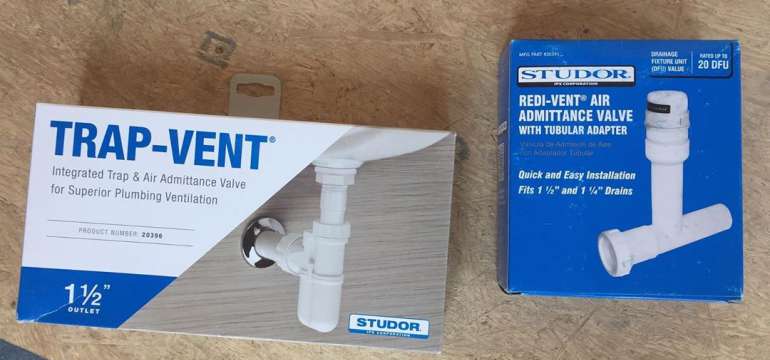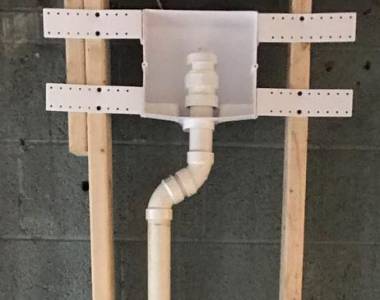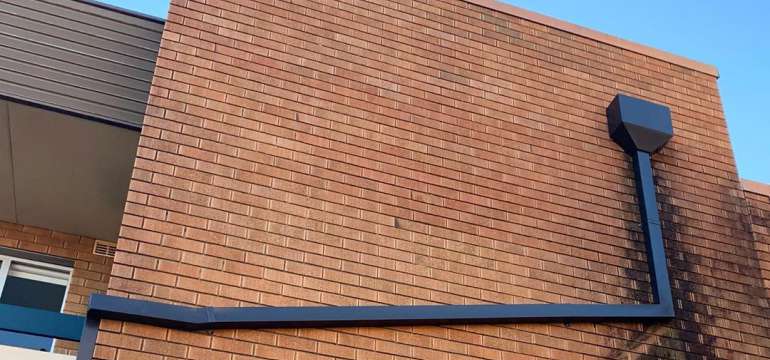Every well-working plumbing system has to be able to vent properly. Typically, a good plumbing system will have a specific group of pipes that each connect to every single drain P-trap. These pipes also extend to the main stack. This stack travels up through the house and sticks out of the roof.
For some homes, this set up is not feasible. As a result, it’s necessary to find alternative ways to vent your toilet in addition to the entire plumbing system. However, this is all based on your local building codes, so it’s best to check before you start applying alternative venting methods.
Before we start discussing the different alternatives to a traditional plumbing roof vent, it’s best to understand why bathroom plumbing vents are necessary fully. When water runs through pipes, it forms a suction. If the suction is strong enough, water can be sucked right out of the traps and emit sewer gas into your home. By having vents, suction is very minimal.
Generally, when vents are used, the vent pipes are attached to the traps. They attach to these traps a little bit above the horizontal section of the pipe that’s responsible for moving water towards the drain. Now, if a vent pipe gets clogged or wasn’t installed properly, water will either drain very slow or get stuck. If you notice this, make sure you get it resolved as quickly as possible.
Air admittance valves

Air admittance valves sometimes referred to as cheater vents, are a substitute for a traditional vent in a plumbing system. Although these are very useful devices, in some states, they’re not allowed. Minnesota is a prime example of this.
If your local building codes allow you to use air admittance valves, then you’ll want to choose a quality product. There are many on the market, but a good valve needs to be able to keep sewer gas from leaking back into your home and make minimal noise when water is running through them.
Studor vent
 Studor vents are a very popular kind of air admittance valve that works really well. If you’re wondering how Studor vents work, after the toilet is flushed, the water flows down the drain resulting in negative pressure. This negative pressure causes the vent to open and let in enough air to relieve the pressure. This, in return, keeps sewer gasses from entering your home.
Studor vents are a very popular kind of air admittance valve that works really well. If you’re wondering how Studor vents work, after the toilet is flushed, the water flows down the drain resulting in negative pressure. This negative pressure causes the vent to open and let in enough air to relieve the pressure. This, in return, keeps sewer gasses from entering your home.
So, how do you install a Studor vent for the toilet in your home?
- Locate the toilet drain line and use a hacksaw to cut it 2 inches from the wall.
- You’ll now need to take a tee fitting and install it to the drain line with the use of PVC glue where the line meets the wall.
- After the tee fitting has been installed, attach the drain line from the tee to the toilet flange with the use of the PVC glue.
- Attach a PVC reducer in the port of the tee. This reducer will change the overall size of the drainpipe to accommodate to the size of the Studor vent. Again, use PVC glue to do this.
- You’ll now need a section of PVC pipe that’ll extend at the very minimum of 4 inches above the weir located in the toilet’s trap and into the tee.
- Take a PVC male fitting and attach it to the PVC pipe with the use of PVC glue. This should extend out of the reducer.
- Use pipe thread compound to cover the threads on the male fitting.
- Take your Studor valve and thread it onto the male fitting until it’s tight.
- Install the toilet, flush it, and inspect the area for leaks.
You have now successfully installed a Studor vent. As mentioned earlier, make sure you call your local building inspectors to make sure you’re allowed to use air admittance valves.
Toilet without a vent through a roof stack
For most households, the toilet is one of the most important fixtures in the home. The toilet is vented by the main roof stack. If you didn’t already know, the main roof stack is the center of your home’s venting system. All of the vents located in your house connect to it with the use of several different branch lines.

Alternative to a roof stack
Typically, the main stack goes through the roof. However, sometimes, the design of the house does not allow this. In this situation, you can redirect your main stack through a wall if your local building codes allow it. Most do, but there are specific conditions you must meet if you choose to do so.
☆ The pipe has to extend vertically, and the pipe has to extend farther than the frame of the highest window in your home.
☆ In certain communities, the pipe has to extend vertically past the roofline of the house.
Always call your local building inspector to make sure you are following proper regulations. It’s important to note that there are drawbacks to having your main stack assembled this way.
First, because there is an elbow in the design of the pipe, it’s much harder to clean. This can be a hassle if something accidentally gets stuck in the pipe. Second, if your mainline does, in fact, extend to outdoors, the pipe can become frozen during the winter months. This can sometimes result in problems with the performance of your plumbing system.
- If You Have No Hot Water Pressure, Here’s What You Should Do - December 28, 2021
- What is the Right Shower Drain Pipe Size? - January 25, 2020
- Wet Vent Plumbing, What Is It? How Do You Utilize It? - November 17, 2019


Gary R
Thursday 24th of August 2023
I found that a studor vent works on a toilet but you need to get it as close as you can to have it work well. It says up to 6 feet away but I located mine 4.5 ft away and it wasn't enough air flow. Toilet would flush with studor vent off but screw it on, flush toilet twice the third time water wouldn't go down.
Dale
Saturday 16th of September 2023
@Gary R, I used a 500 DFU AAV (Studor) in my 3" PVC sewer line and works better than my toilet the house was built with. In a vertical vent line 6" above the toilet water level and about 6' from the fixture it has worked without issue for 7 years now.